I received the following message from one of my clients who is a doctor in Western Medicine and suffering from sacroiliac joint pain in pregnancy. I thought that this might help a lot of you, so I decided to publish my response.
Hey Sarah! How are you doing? Hope everything is going well!
I was wondering if you had any advice for me from your yoga, massage, or your many other backgrounds, to help me with sacroiliac joint pain of pregnancy? Western medicine basically just says, “Suck It Up and it will hopefully go away after giving birth”. I’m intermittently limping with it, and was wondering if you had any tips that would help. Thank you!!
First of all let’s look at where the sacroiliac joint is located and why it is a common place for women who are pregnant to have pain there. It is exactly the area the ilium meets the sacrum, near the base of the spine.
Here’s a great chart showing the sacroiliac joint:
You guessed it, the weight of the pregnancy is putting huge strain exactly on the sacroiliac joint, as you can see in this image:
Here’s a pic showing how the pressure from the baby is directly on the sacroiliac joint:
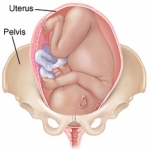
Baby Pressing on Sacroiliac Joint source
That is an image of a near term baby. But what should you do if you are only halfway into your pregnancy and the pain is already causing you to LIMP? Yikes!! Pain plus limping has already turned this dreamy experience of growing a baby inside of you to one that feels uncomfortable, limiting and defeated even before the baby is born. As my client wrote here, Western Medicine basically says “When you are pregnant, there is not a lot we can do for you, you’ll just have to endure it for the rest of your pregnancy and hopefully it will subside after the birth”. Whoa, that’s reassuring.
During pregnancy, and at other times throughout or normal cycle, our body produces a hormone called relaxin. It’s this fantastic hormone that softens our ligaments and our tissues that connect our joints. This sounds wonderful during pregnancy because it creates more mobility in the pelvis enabling a baby to pass through it. It is a normal process that all throughout evolution has occurred to support birthing.
Sometimes, unfortunately, pain occurs from this process. It is caused by one of a few possibilities: the pelvic joints move unevenly because the relaxin has affected one side more than the other, muscular shifts and changes have occurred in other pelvic girdle joints, or one pelvic girdle joint is causing a tapping on other joints of the pelvis. Frequently this minor shift in the sacrum makes one leg to display as shorter than the other, causing limping. The sacrum has essential moved posterior thereby rendering the natural curve of the spine out of alignment.
I, however, feel that there is always something that can be done to help with the pain. Pain is a good thing, in that it is a messenger.
Here are some things it could be telling us:
1. Slow down and try to avoid standing for lengthy periods of time. For so many of us being “on the go” and working nearly all the time is a way of life. Our jobs require us to stand at length or to work longer hours than our bodies can handle. Pregnancy may require changes to support the shifting pelvic landscape.
2. Get some extra support.
a. Insoles- find some that are great for lumbar support. Check out this reflexology chart that shows where you need to make sure that the insoles support in order to be helpful.
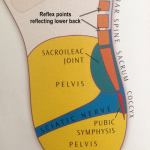
Reflexology Points of Lower Back source
b. Sacroiliac Belt-some people swear by the support they receive from these belts that look like this:

c. Body Pillow- Proper Hip Stacking
The kind/brand you choose to buy is of no relevance to me, but the idea that hips will be stacked directly on top of one another is very important, as is the idea that the ankle will be elevated to maintain this alignment.
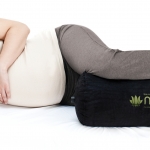
Body Pillow Positioning source
3. Get an expert to touch you and help get the bones and muscles positioned correctly. This is helpful during pregnancy and critical following birth to ensure future pain in this area does not continue.
a. Massage- Make sure you go to a LMT who specializes in pregnancy and postpartum
b. Craniosacral Therapy-Again, look for a practitioner who specializes in pregnancy and postpartum. This is a very effective modality and is nice because you can lie on your back during the session.
c. Chiropractics-This can often bring immediate relief, as they are able to adjust the sacrum and stop the pain, by pressing the sacrum forward. This is additionally imperative immediately before birthing, as the baby will be unable to turn its head correctly to enter the birthing canal, causing complications, lengthy labor and risk of C-section because of “failure to progress”. Only go to a chiropractor who is trained in this technique and has a table specifically for pregnancy which allows the pregnant patient to lie face down.
4. Stay Active
a. Yoga- There are yoga classes especially for pregnant women. They generally incorporate stretching (see below) and breathing exercises that are very helpful for calming the body, mind, and spirit.
b. Stretching-Two stretches that are extremely helpful are a modified Supine Twist for pregnancy and a Piriformis Stretch.
Here you can see a picture of each:
This is a regular supine twist. You can modify it by placing a pillow under the bent knee to eliminate pressure in your belly.

Here is the Piriformis Stretch, also known as the figure 4 stretch:

Piriformis Twist Stretch source
c. Water Therapy- Watsu and repeated water squats (performed like regular squats but standing in neck deep water) were extremely effective in opening the pelvis and reducing my labor time. It’s a bit like meditation with a breathing technique necessary to maintain a consistent pace for 20-40 minutes. It was one of the most effective things that I did during my pregnancy and caused zero stress on my knees as I was in the water!!
d. Physio Ball- Get a physio ball where your knees (when seated) create a 90 degree angle.
Spread your legs slightly for stability and rock side to side. This is especially soothing when you have someone behind you massaging your sacrum and hips with firm downward strokes, especially during labor.
5. Get some oils/herbs to reduce inflammation
a. Warm compresses with therapeutic grade lavender and ylang ylang oil can be calming
b. Chamomile, Ginger, Mint, Lemon Balm, Lemon Grass and Red Raspberry leaf (only from week 32 on this one) all can be helpful and beneficial especially the red raspberry leaf near the end of the pregnancy.
6. Eat well and be mindful of weight gain
a. Go for alkaline foods. For a list of alkaline foods click here: Alkaline Food Chart
b. Drink freshly pressed Green Juices with ginger. Contact me if you have questions about how you can prepare many of these ahead of time so that you are not a slave to cleaning your juicer.
c. Drink pure green smoothies made from whole fruits and veggies. Skip the protein powders.
d. Drink water with sliced organic lemons (at room temperature).
e. Eat only organic fruits and vegetables. There have been multiple studies showing newborn babies with residues from pesticides in their system directly following birth from the foods their mother consumed while pregnant. Pesticides contain Xeno-estrogens which are hormonally disruptive and known to cause cancer.
So, as you can see there are many things that can be done to help alleviate this pain naturally and help the duration of your pregnancy to be much healthier and more comfortable.


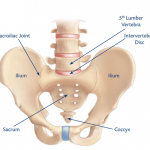



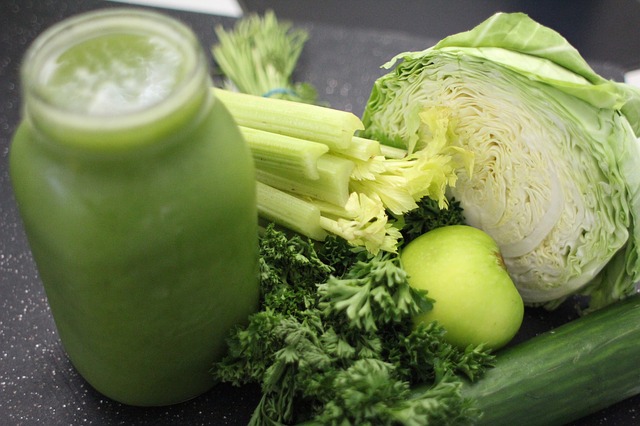
Leave A Comment